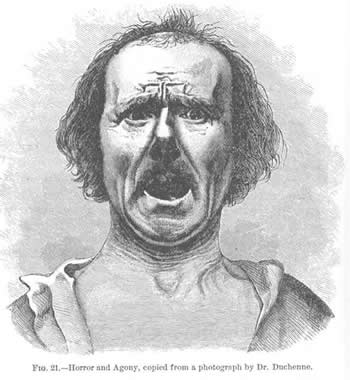Noodling around possible chapter or portal headings for my hypothetical reader—one might be “What am I?” All the headings will have the single letter word “I” in it. As in “How Do I Feel?”  There’s a bit of a pun in that one. One asks how do you feel and one says well, I feel fine or whatever. But I mean “how” does one feel in biochemical sense—what are the emotions/feelings/affects biochemically speaking. This heading too might point in the direction of those “lower” portions, down on the brain stem, that seem to have something to do with the primal fight/flight response.
There’s a bit of a pun in that one. One asks how do you feel and one says well, I feel fine or whatever. But I mean “how” does one feel in biochemical sense—what are the emotions/feelings/affects biochemically speaking. This heading too might point in the direction of those “lower” portions, down on the brain stem, that seem to have something to do with the primal fight/flight response.
Adrenaline.
Dopamine.
Seritonin.
“What Do I Feel,” however, pretty much says what it means. What is one feeling?
“Who Am I” points in the direction of identity.
But what am I?—that’s a bit odd I think. I guess one would first say—man or woman. But I think I am thinking some lower down and a bit more primal than that: the distinction or the attempt to make it between human beings and the animals. Aristotle: the rational animal, Hegel the sick animal. My response though would be more in the direction of: human beings: the social animal.
My readings in and around evolutionary theory suggest that may be really What One Is? The social animal. In spite of all the nonsense about the selfish gene, human beings appear not selfish but completely gregarious and mutually supportive. Selfishness is the epiphenomenon of this deeper phenomenon. People throw out the baby with the bath water on that one, depending on the fish they want to fry. But what gets us along in any case is not individual, atomistic selfishness, but group being and group creation.
Thus human beings: the social animal. And so, sociology points out at the extreme, coming at times quite close to a tabla rasa notion of mind, that what human beings know is what they have learned from other human beings and from the very social structures (quite real structures like building and roads) that guide them in their responses to each other without really having to know anything. Human beings have moved or changed rapidly because they leave behind them structures upon which the next generation builds. Genetic adaptation is not necessary, since we build our own environment. But this capacity to erect a social environment that might be built upon is no doubt the result of a genetic predisposition.
The downside of this or at least one downside—because there are others—is the business about hyper conformity. Nietzsche emphasizes this aspect with his quite correct characterization of human beings as the herd animal. Supposedly—this is the ideology—individuality, individual effort, and most especially individual responsibility are prized qualities or values…But it’s well nigh impossible to buck conformity. Hell, it is impossible.
Remark re: history of ideas. The enlightenment set off this whole view with people like Helvictius and Rousseau later. Nietzsche is made possible by the sociological view—in fact his philosophizing might be an attempt to figure out how individuals might arise from the herd.


 assume.
assume.


 midway between Atlanta and Macon off inter state 75.
midway between Atlanta and Macon off inter state 75.

 computer.
computer. files trying to relocate him, and I always do because I called him or his picture rather “crazyface.”
files trying to relocate him, and I always do because I called him or his picture rather “crazyface.” not a Republican, but I never liked Bill.
not a Republican, but I never liked Bill. the product, over six months or so, of my effort to stop taking the anti-depressant called Effexor.
the product, over six months or so, of my effort to stop taking the anti-depressant called Effexor.
